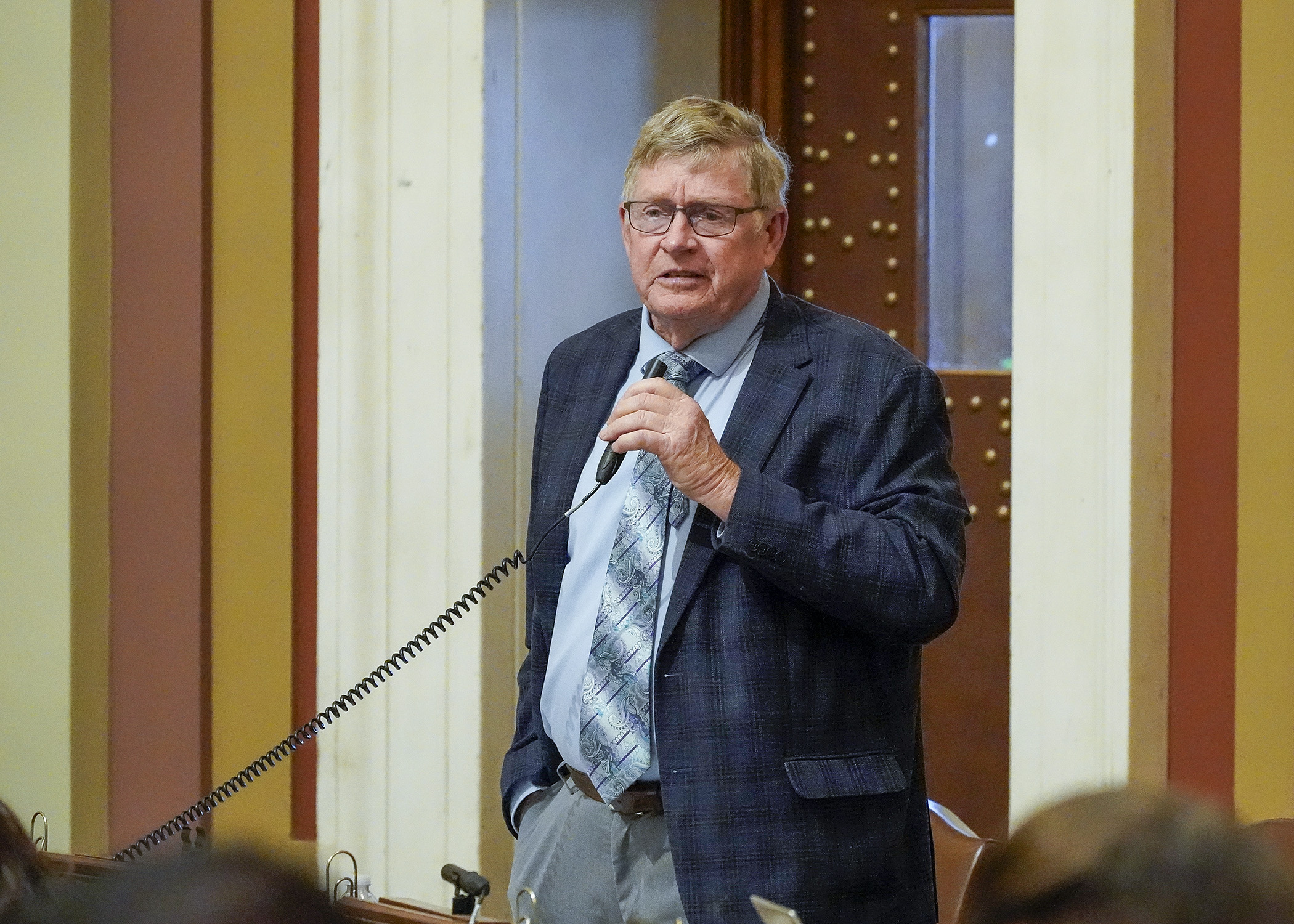House moves quickly to pass agriculture budget, policy bill
The last-minute rush of legislation was on full display Sunday when the House passed the conference committee report on the omnibus agriculture finance and policy bill.
The 130-4 vote came a couple hours after the agreement was revealed online. There had been no public meetings on HF2446 since it was first heard by the conference committee May 9.
The Senate passed the bill 58-8, sending the bill to the governor.
In the 2026-27 biennium, it would appropriate $115 million to the Department of Agriculture, $13.5 million to the Board of Animal Health, $8.7 million to the Agricultural Utilization Research Institute and $2 million to the Office of Broadband Development to increase high-speed internet access across the state. Funding includes $400,000 to combat the spread of livestock and poultry diseases.
The global budget deal allotted $9 million to the agriculture conference committee, $8 million less than House leadership had set for the agriculture in its budget targets.
Rep. Paul Anderson (R-Starbuck) regrets having to cut that much money, but said the committee “kept the heart of the bill intact … and untouched in terms of the programs that both sides of the aisle feel were important to our respective caucuses.”
 Rep. Paul Anderson presents the agriculture conference committee report on the House Floor May 18. (Photo by Andrew VonBank)
Rep. Paul Anderson presents the agriculture conference committee report on the House Floor May 18. (Photo by Andrew VonBank)Provisions important to his caucus include maintaining funding to the Board of Animal Health to deal with livestock diseases, relief for farmers suffering from wolf predation and crop destruction by elk, and funding for county agriculture inspectors and the emergency agriculture account in case of a resurgence of avian influenza.
Anderson also listed one regret: that the final report contains a “non-negotiable” Senate proposal to raise grain license inspection and storage fees.
Rep. Rick Hansen (DFL-South St. Paul), an agriculture committee co-chair, also praised the bill for adequately funding the Board of Animal Health in the face of the ongoing threat of avian influenza. The money, he said, would protect everyone who may be harmed by the disease.
“Agriculture is not just the farmers, it’s the farm workers, it’s the people who produce the food, process the food, prepare the food and then ultimately those of us who eat the food.”
To that end, the bill would transfer $1.5 million from the General Fund in fiscal year 2026 to the agricultural emergency account, making up to $750,000 available to test for avian influenza in milk, poultry, and pet foods; assist the Health Department to monitor avian flu in farmers, farm workers and people who process agricultural products; and provide funding to the University of Minnesota to develop rapid testing to detect bird flu in private wells and urban drinking water and wastewater systems.
“We do not have a lot of named grants,” Hansen said. Many have been made competitive, which should mean a higher level of fairness.
“You shouldn’t have to have a lobbyist to be able to get public support for farming,” he said.
However, the bill would appropriate $3 million to help facilitate needed infrastructure upgrades at First District Association in Litchfield, which processes around 40% of the state’s dairy production, according to Anderson, sponsor of HF2446.
“If they were forced to reduce production, it would have negative impacts for some 600 farmers in our state and have consequences for Minnesota’s dairy production in general,” Anderson said in a statement.
What’s in the bill?
Some notable policy provisions in the final report, some with funding, include:
- modifying laws regulating home-based milk marketers;
- promoting biofertilizer innovation and efficiency;
- supporting local food purchasing assistance programs;
- modifying food processing regulations and raising licensing fees;
- providing mental health outreach and support to farmers, ranchers, farm workers and employees; and
- modifying the rules on who is eligible to manufacture home-processed pet treats.
A Senate-only provision to prohibit the declawing of cats is not in the report. Instead, the bill would require the Board of Veterinary Medicine to consult with veterinarians and submit recommendations on the prohibition of cat declawing to the Legislature by Feb. 1, 2026.
Related Articles
Search Session Daily
Advanced Search OptionsPriority Dailies
Speaker Emerita Melissa Hortman, husband killed in attack
By HPIS Staff House Speaker Emerita Melissa Hortman (DFL-Brooklyn Park) and her husband, Mark, were fatally shot in their home early Saturday morning.
Gov. Tim Walz announced the news dur...
House Speaker Emerita Melissa Hortman (DFL-Brooklyn Park) and her husband, Mark, were fatally shot in their home early Saturday morning.
Gov. Tim Walz announced the news dur...
Lawmakers deliver budget bills to governor's desk in one-day special session
By Mike Cook About that talk of needing all 21 hours left in a legislative day to complete a special session?
House members were more than up to the challenge Monday. Beginning at 10 a.m...
About that talk of needing all 21 hours left in a legislative day to complete a special session?
House members were more than up to the challenge Monday. Beginning at 10 a.m...